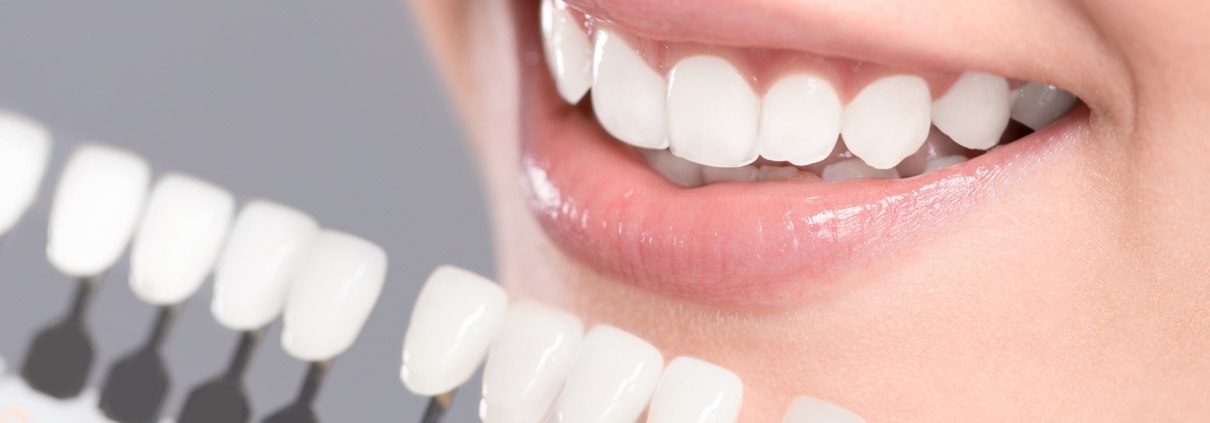The Color Spectrum of Teeth
Our smiles are as unique as our fingerprints, each bearing its own distinct hue that reflects not only our dental health but also our lifestyle and habits. The color of our teeth, ranging from dazzling white to subtle ivory to deep shades of yellow, is a complex interplay of factors influenced by genetics, age, diet, and oral hygiene practices. In this article, we delve into the fascinating world of tooth color, decoding its nuances and shedding light on the spectrum of shades that grace our smiles.
Understanding Tooth Color
The natural color of teeth is determined by the composition of dental enamel—the hard outer layer that protects the underlying dentin and pulp. Enamel itself is translucent, allowing the yellowish hue of dentin to show through. The thickness and smoothness of enamel, as well as the presence of pigments in dentin, contribute to the overall color of teeth.
Variations in Tooth Color
No two smiles are exactly alike, and tooth color can vary widely from person to person. Factors influencing tooth color include:
Genetics:
Just as eye and hair color are inherited traits, so too is the color of our teeth. Some individuals may naturally have brighter, whiter teeth, while others may have teeth that tend towards shades of yellow or gray.
Age:
As we age, our teeth naturally darken and yellow due to the gradual thinning of enamel and the accumulation of surface stains from foods, beverages, and tobacco use.
Diet and Lifestyle:
Certain foods and beverages, such as coffee, tea, red wine, and dark-colored fruits, can stain tooth enamel over time, leading to discoloration. Similarly, tobacco use, whether smoking or chewing, can cause teeth to become yellow or brown.
Oral Hygiene:
Good oral hygiene practices, including regular brushing, flossing, and dental check-ups, can help prevent surface stains and maintain the natural brightness of teeth. Conversely, poor oral hygiene can contribute to discoloration and plaque buildup.
Medical Conditions and Medications:
Some medical conditions and medications, such as certain antibiotics, can affect tooth development and color. Trauma to the teeth, such as injury or infection, can also lead to changes in tooth color.
Common Tooth Colors
While tooth color can vary significantly from person to person, there are several common shades that are often observed:
Bright White:
Bright white teeth are often associated with youth, health, and beauty. They typically have a clean, luminous appearance and may be more prevalent in individuals with thicker enamel and minimal staining.
Ivory:
Ivory-colored teeth have a slightly warmer tone than bright white teeth, with a subtle hint of yellow or cream. This natural shade is common among many individuals and is often considered aesthetically pleasing.
Yellow:
Yellow teeth may result from surface stains, thinning enamel, or pigmentation in dentin. While some degree of yellowing is normal with age, excessive yellowing may indicate poor oral hygiene or lifestyle habits.
Gray or Brown:
Gray or brown discoloration may be caused by trauma, medication, or certain medical conditions affecting tooth development. In some cases, these colors may also be indicative of internal tooth decay or damage.
Achieving a Brighter Smile
For those seeking to brighten their smiles, there are several options available, ranging from simple lifestyle changes to professional dental treatments:
Maintain Good Oral Hygiene:
Brushing, flossing, and regular dental check-ups are essential for preventing surface stains and maintaining the natural brightness of teeth.
Limit Staining Foods and Beverages:
Cut back on coffee, tea, red wine, and other foods and beverages known to stain tooth enamel.
Quit Smoking:
Tobacco use can cause significant tooth discoloration. Quitting smoking or chewing tobacco can improve the color and overall health of your teeth.
Professional Teeth Whitening:
Professional teeth whitening treatments performed by a dentist can effectively remove surface stains and lighten the overall color of teeth.
Embracing the Diversity of Smiles
In a world that often idolizes perfectly white teeth, it’s important to remember that the beauty of a smile lies not in its uniformity but in its authenticity. The color of our teeth is as unique as our personalities, reflecting our individuality and life experiences. By embracing the diversity of smiles, we celebrate the richness and complexity of human expression, one tooth at a time.




